
|
Astronomy Picture Of the Day (APOD)
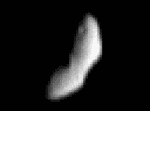 Eros Encounter Nears
Eros Encounter Nears
9.02.2000
After an unanticipated extra trip around the Sun, the NEAR spacecraft is now politely approaching asteroid 433, Eros, at a respectful relative speed of about 20 miles per hour. Still nearly 2,000 miles distant, NEAR will close to within approximately 200 miles by February 14th - Valentine's Day.
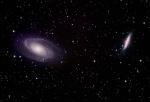 Galaxy Wars: M81 Versus M82
Galaxy Wars: M81 Versus M82
8.02.2000
In the left corner, wearing a red nucleus surrounded by blue spiral arms, is M81. In the right corner, sporting light stars and dark dust lanes, is M82. These two mammoth galaxies have been locked in gravitational combat for the past billion years.
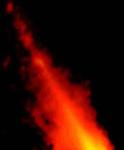 Rings Around Beta Pictoris
Rings Around Beta Pictoris
7.02.2000
An unusual dust disk surrounds nearby star Beta Pictoris. Discovered in 1983, astronomers are still learning just how unusual this disk is. Recent images and computer simulations indicate that the disk contains several elliptical dust rings larger than our own Solar System.
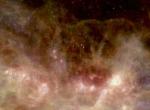 The W4 Chimney
The W4 Chimney
6.02.2000
A huge chimney venting hot clouds of gas out from the plane of our Milky Way Galaxy has recently been imaged in radio waves. The Canadian Galactic Plane Survey team used an array of radio telescopes to survey an ionized gas region known as W4.
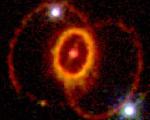 The Mysterious Rings of Supernova 1987A
The Mysterious Rings of Supernova 1987A
5.02.2000
What's causing those odd rings in supernova 1987A? In 1987, the brightest supernova in recent history occurred in the Large Magellanic Clouds. At the center of the picture is an object central to the remains of the violent stellar explosion.
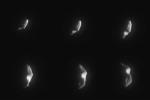 NEAR to Asteroid Eros
NEAR to Asteroid Eros
4.02.2000
On December 23, 1998 the Near Earth Asteroid Rendezvous (NEAR) spacecraft flew by asteroid 433 Eros. The robotic spacecraft was intended to brake and orbit Eros, but an unexpected shutdown of its main engine caused this plan to be aborted.
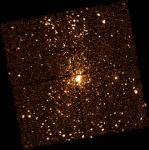 X-Ray Stars Of Orion
X-Ray Stars Of Orion
3.02.2000
The stars of Orion shine brightly in northern winter skies where the constellation harbors the closest large stellar nursery, the Great Nebula of Orion, a mere 1500 light-years away. In fact, the apparently bright...
 Colorful Clouds Of Carina
Colorful Clouds Of Carina
2.02.2000
Tumultuous clouds of the Carina Nebula, 8000 light-years away, glow in planet Earth's southern sky. Striking and detailed, this close-up of a portion of the famous nebula is a combination of exposures through six different filters taken with the Hubble Space Telescope's Wide Field Planetary Camera 2 in April of 1999.
 Aeolian Mars
Aeolian Mars
1.02.2000
Mars' atmosphere is relatively thin, still when martian winds blow they weather and shape its surface. Like familiar aeolian features on Earth, this field of dunes within Mars' Rabe crater exhibits graceful undulating ridges which can shift as windblown material is deposited on the dunes' windward face and falls away down the steeper leeward slopes.
 Abell 2218: A Galaxy Cluster Lens
Abell 2218: A Galaxy Cluster Lens
31.01.2000
Gravity can bend light. Almost all of the bright objects in this recently released Hubble Space Telescope image are galaxies in the cluster known as Abell 2218. The cluster is so massive and so compact that its gravity bends and focuses the light from galaxies that lie behind it.
|
January February March April May June July August September October November December |
|||||||||||||||||||||||||||||||||||||||||||||||||